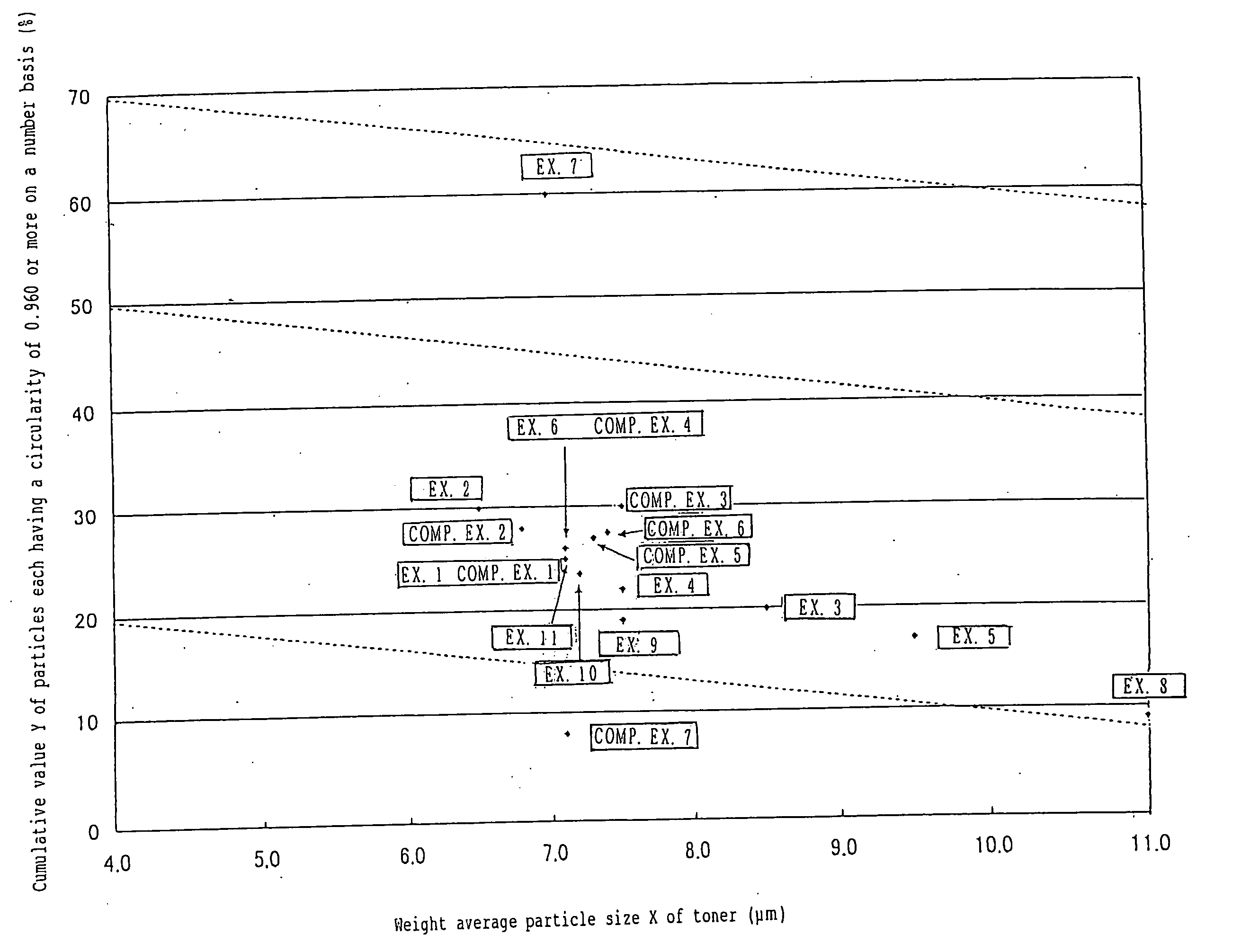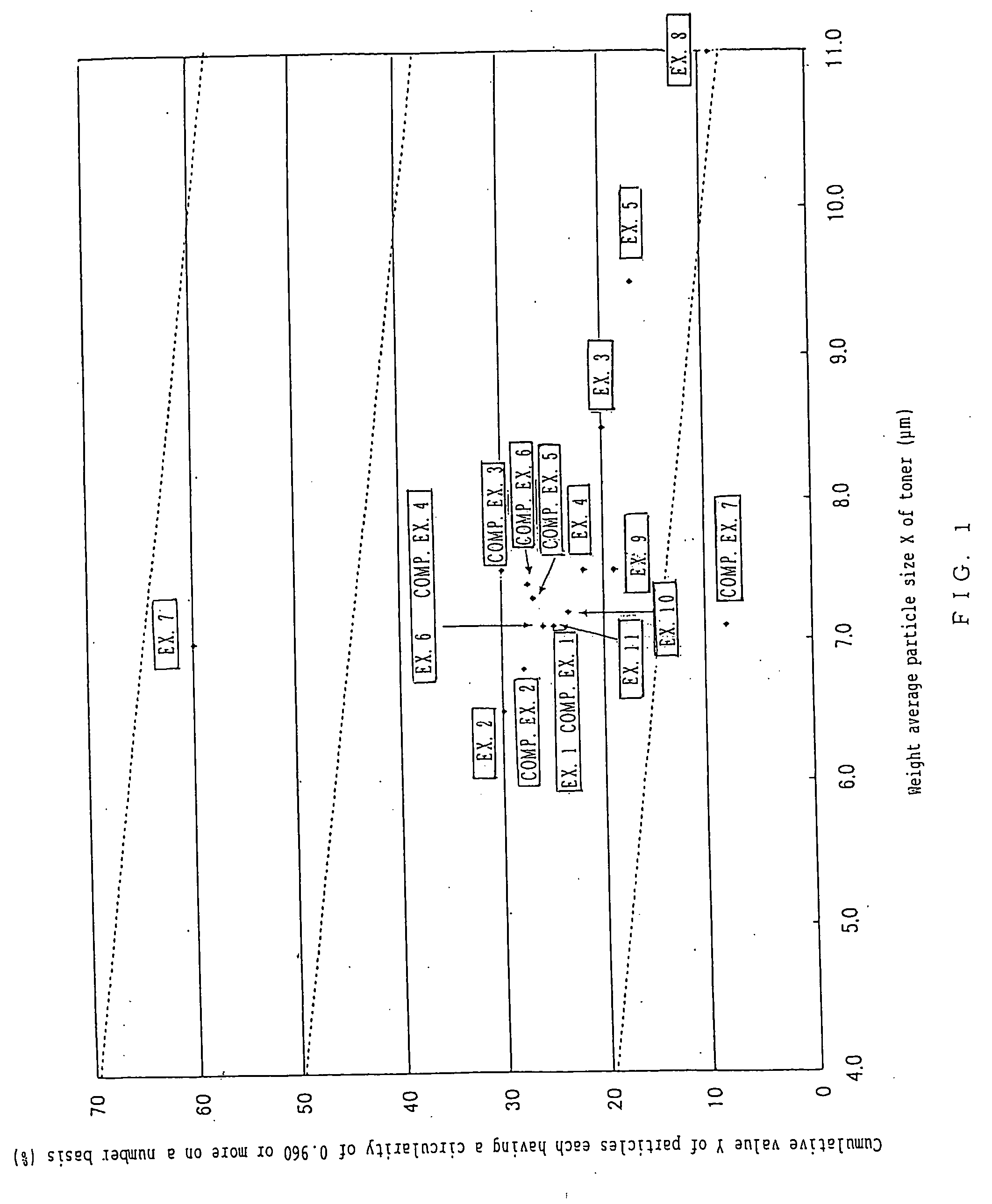Color toner
a technology of toner and color, applied in the field of color toner, can solve the problems of contamination of the inside of the machine, the complexity of the fixing apparatus, and the inability to establish superior machines without toner performance improvemen
- Summary
- Abstract
- Description
- Claims
- Application Information
AI Technical Summary
Benefits of technology
Problems solved by technology
Method used
Image
Examples
example 1
[0172] A toner 1 was prepared according to the following method.
4 Hybrid resin 100 parts by mass Wax A 3 parts by mass Aluminum 1,4-di-t-butylsalicylate 2 parts by mass Compound Cyan pigment (Pigment Blue 15:3) 5 parts by mass
[0173] After the above prescribed materials had been sufficiently premixed in Henschell Mixer, the mixture was melted and kneaded in a biaxial extruding kneader. The resultant kneaded product was cooled and then roughly pulverized with a hammer mill into products each having a size of about 1 to 2 mm. Then, the resultant roughly pulverized products were finely pulverized with an air-jet pulverizer into products each having a size of 20 .mu.m or less. As shown in Table 3, the resultant finely pulverized products were further pulverized in the apparatus A shown in FIGS. 2 and 3 capable of performing classification and surface modification treatment by means of mechanical impact force at the same time, and cyan particles 1 (classified products) were obtained under...
example 2
[0237] A cyan toner 2 was produced in substantially the same manner as in Example 1 except that the wax B was used and the production conditions were altered as shown in Table 3. A two-component cyan developer 2 was prepared by using the cyan toner 2 produced, and was evaluated for various items in the same manner as in Example 1. As shown in Table 4, the results of this example were satisfactory although the cleaning, fixable range, sleeve contamination, and charge variation of this example were slightly poor.
example 3
[0238] A cyan toner 3 was produced in substantially the same manner as in Example 1 except that the wax C was used and the production conditions were altered as shown in Table 3. A two-component cyan developer 3 was prepared by using the cyan toner 3 produced, and was evaluated for various items in the same manner as in Example 1. As shown in Table 4, the results of this example were satisfactory although the transfer efficiency, fixable range, blocking, and charge variation of this example were slightly poor.
PUM
| Property | Measurement | Unit |
|---|---|---|
| weight average particle diameter | aaaaa | aaaaa |
| weight average particle diameter | aaaaa | aaaaa |
| diameter | aaaaa | aaaaa |
Abstract
Description
Claims
Application Information
 Login to View More
Login to View More - R&D
- Intellectual Property
- Life Sciences
- Materials
- Tech Scout
- Unparalleled Data Quality
- Higher Quality Content
- 60% Fewer Hallucinations
Browse by: Latest US Patents, China's latest patents, Technical Efficacy Thesaurus, Application Domain, Technology Topic, Popular Technical Reports.
© 2025 PatSnap. All rights reserved.Legal|Privacy policy|Modern Slavery Act Transparency Statement|Sitemap|About US| Contact US: help@patsnap.com



